- Home Page
- Better Kites
- ... Sled Kite
How to Build a Sled Kite
Step by Step—Page 1 of 3
The MBK 2-Skewer Sled
This set of instructions on how to build a sled kite assumes you know absolutely nothing about kite making. And if you are a "visual learner", it should be possible to complete the kite by referring only to the pictures.
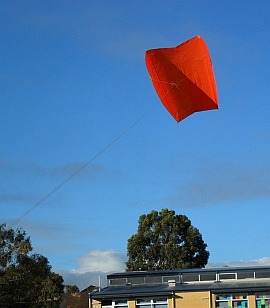 MBK 2-Skewer Sled
MBK 2-Skewer SledYou can expect this design to fly higher than most cheap store-bought sleds, particularly in very light winds. And being a simple sticked design, the smoother the breeze, the better.
You might already have some of the simple tools and materials required. Anything you don't have is easily bought. If it's not exactly what I used, then at least something pretty similar!
At 58 cm (23 in.) long when rolled up, the MBK 2-Skewer Sled is small enough for kids and yet provides great flying performance for adults to enjoy as well.
This sled has a shallow V-shape cutout at the top and has spars that are a little further apart at the top than they are at the bottom.
No tails are required, although long and colorful ones can be used for more spectacle in the air!
On this site, there's more kite-making info than you can poke a stick at. :-)
Want to know the most convenient way of using it all?
The Big MBK E-book Bundle is a collection of downloads—printable PDF files which provide step-by-step instructions for many kites large and small.
That's every kite in every MBK series.
How to Build a Sled Kite
Sail
Now's the time to read up on the tools and materials required for making a skewer kite, if you haven't already.
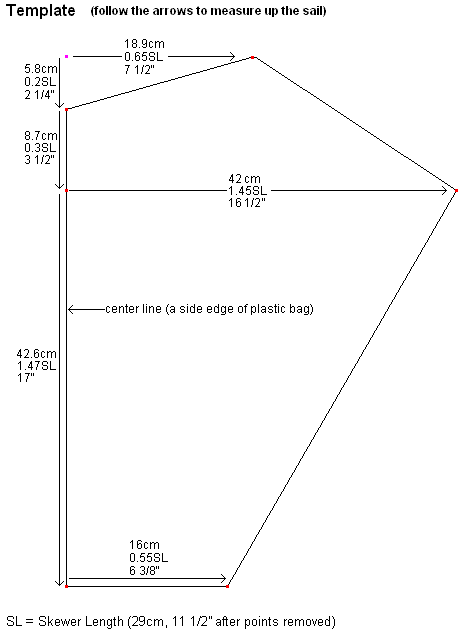
The template shown above represents one side of the kite sail. You will now transfer these measurements to the sail plastic.
Like to see a video clip? Just scroll down to near the end of this page.
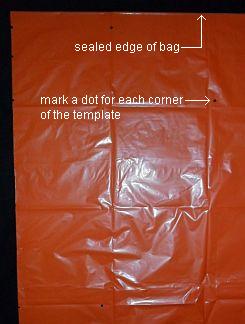
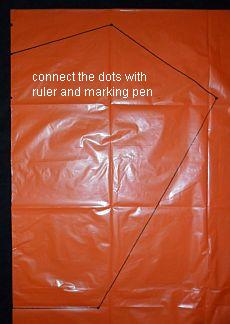
- Take a light plastic bag that will fit the entire template shape within one side, and lay it flat on the floor.
- Mark dots on the plastic, corresponding to the corners of the template. There is no need to use a T-square, since any small error will be duplicated on the other side of the sail. And it will make hardly any difference to how the kite flies.
- Using the marking pen, rule lines between the dots to create the template shape.
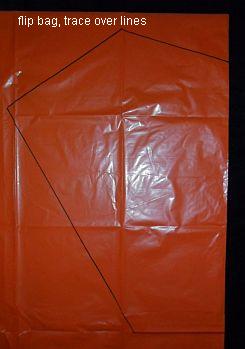
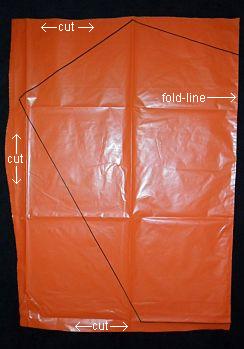
- Flip the plastic bag over, and trace over all the black lines using your marker pen and ruler.
- Cut out a rectangular section of the bag containing the kite sail.
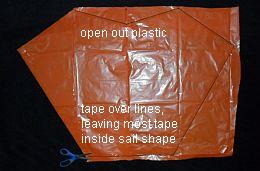
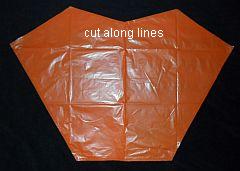
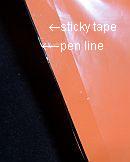
- Open out the bag, and lay it flat on the floor; you can now see the complete sail outline as in the photo.
- Run clear sticky tape along every straight line, leaving most of the tape on the inside of the sail edges.
- Cut along the black lines with scissors to create the sail. See the closeup photo.
As mentioned earlier, there's more kite making on this site than you can poke a stick at. :-)
Want to know the most convenient way of using it all?
The Big MBK E-book Bundle is a collection of downloads—printable PDF files which provide step-by-step instructions for many kites large and small.
That's every kite in every MBK series.
